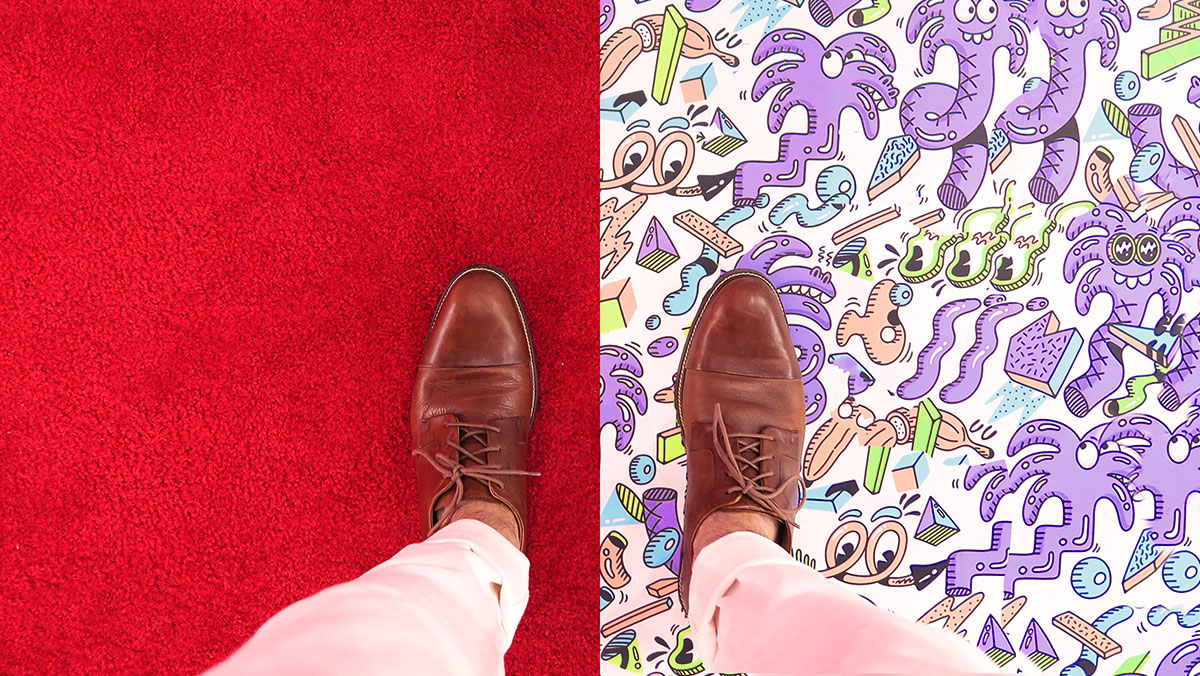
Tone is crucial to how brands express themselves. It communicates an attitude or point of view, beyond the words or images used. Tone unites disparate narratives and ideas, helping a brand to own them – think of the many different stories ALDI tells, and the particular humor and simplicity that binds them (for example, see Pointless Points and Pies).
Tone is effective. It keeps things consistent, yet also helps a brand express a range of emotions, adapt to contexts, and do so memorably. Nike is a master of this (see Nike Culture by Goldman & Papson, p.126-130).
If used well, tone can be a brand’s commercial and emotional backbone. In its own way, a distinctive brand asset.
Yet tone has gone all monotonal…why?
The way we think about, define, and use tone has become one-dimensional, even as channels and experiences have become richer.
So why does everything sound kind of…the same? Why do we concentrate on the tone of voice, not of action or experience? Why is the word authentic everywhere, and why is tone always mediated through “The Great Big Guidelines Document”?
A more organic approach to tone, with a little right-brain love and a sense of collective endeavor, would help brands better harness its power.
Like culture, tone has been given the System-2 treatment
Tone is as sensitive to trends as everything else. We know the brain has two operating systems: System 1 is fast, unconscious, automatic, and is 98% of our thinking, while System 2 is slow, deliberate, effortful, and makes up the other 2% (see Kahneman, Thinking Fast & Slow). Culture has seen a shift toward ‘System 2’ or left-brained thinking (see Orlando Wood’s Lemon). A rational, System-2 dominance makes tone tricky to navigate because we focus on defining and guard-railing it while simultaneously giving it fewer places and ways to come to life. Those guidelines documents have become the only place tone has room to breathe.
Move beyond one dimension
Our System-2 bias manifests as fewer characters and storylines in ads, more montages and words as mantras (see Lemon and Field and Binet). This keeps tone in a one-dimensional box. It’s also why we cling to the word ‘authentic’. Authenticity is important but it is not a tone. The fact that it continually crops up as one is telling: The tropes of authenticity are a trend, and if it’s used as a tone word, what you’re really saying sounds like everyone else.
Tone lives in many guises
Tone isn’t just voice. What about the tone of experience, or tone of action, where tone also helps convey specific nuance.
There’s room to experiment beyond human voice words. Instead of ‘speak like these five things”, tone could be expressed as “make people feel these five things” – starting from the reaction, not the brand.
‘Tone of purpose’ is becoming more important. Purpose has been earnest, but it’s becoming action-oriented and its tone should be the spirit of ‘done is better than perfect’.
Strong tone makes a brand adaptable in all the right places
It’s time for the C-word. During a crisis like COVID-19, the stronger a brand’s tone, the better it has fine-tuned for changed context. This doesn’t mean losing the most ownable parts of tone by over-adapting.
The pandemic has seen many brands respond in a clear tone, it’s just not their tone. It’s COVID’s. Proof? See the ‘blandtage’ of many examples (video below). Other brands, from Guinness to Colgate, have understood where to focus on the virus and where to carry on in a voice adjusted but not changed out of all recognition.
Wean off the guidelines and get right-brained on tone
Tone is organic. People need space to bring their own interpretation to bear. Think beyond comms to experiences and technology. Here, tone doesn’t have a 30-second space or email copy. It’s lived, mediated, or enacted by humans. How can we embrace the idiosyncrasies they will bring to the tone? Strengthen it by making it more open to interpretation?
Think tonal contribution, not just tonal fit
Employees can contribute to tone and be empowered to do so. Some ideas to consider:
- If your brand has four tonal principles, create a fifth, open for each employee’s interpretation. This is not about tonal fit, it’s about their unique tonal contribution.
- This fifth could also be one that helps adapt to the context – the tonal equivalent of Google’s 20% time.
- Don’t dictate tone from comms, build it from the grassroots. What do consumers and employees think a brand sounds like, talks like, acts like?
- A great test of a devolved tone is social media. Speed is everything, but there are no free passes. When employees have freedom of response, it builds trust and ensures the tone lives organically.
Going tonal never has to be monotonal
Pay attention to different types of tone, make it more System-1, and above all, help employees to live it as an organic brand asset – not just page 41 of the guidelines document.
Cover image source: Joshua Coleman
